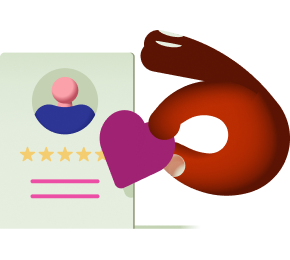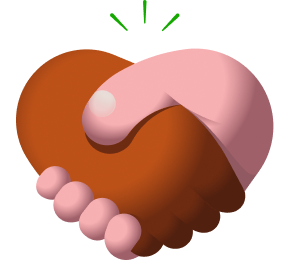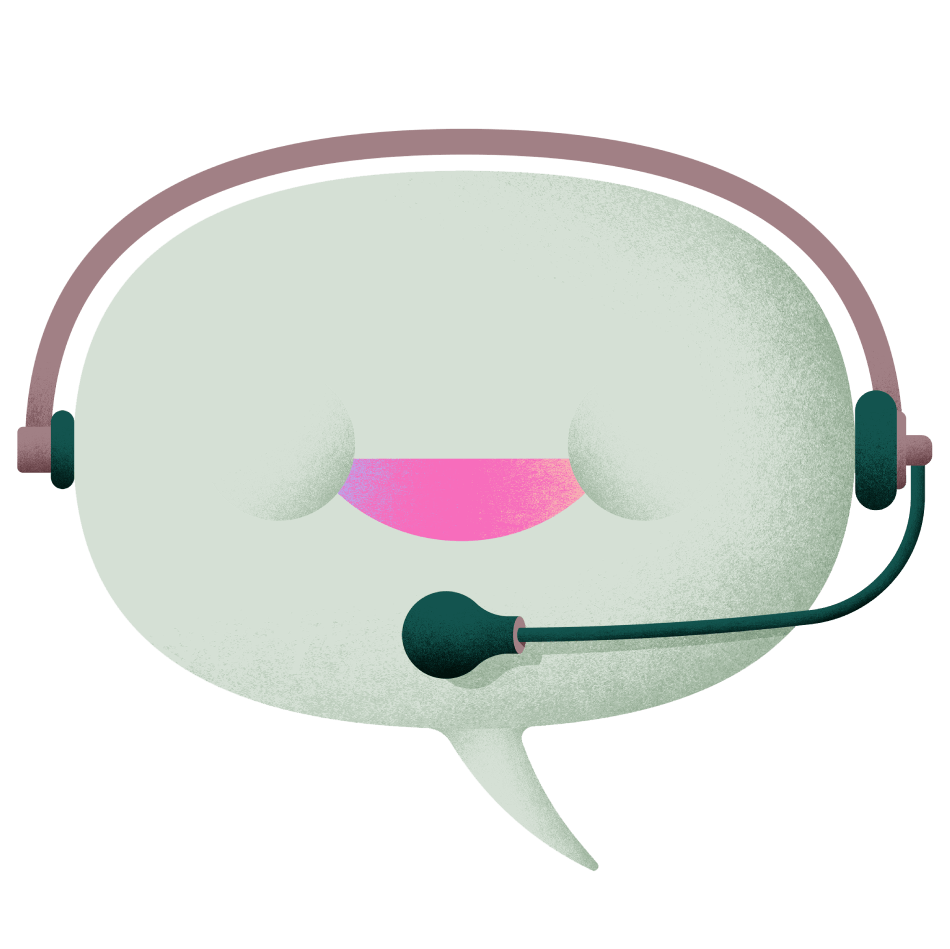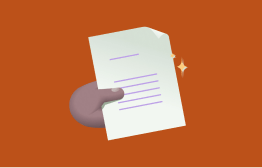Generative AI vs. ChatGPT: How They Interrelate

Artificial intelligence (AI) is reshaping the way industries operate, allowing for enhanced creativity and efficiency in a variety of sectors that include customer support, predictive analytics, risk management, and marketing.
Two notable AI technologies are generative artificial intelligence and ChatGPT. While ChatGPT has garnered significant attention and is a prominent example of text generation, to get the most benefit from the technology, its users should understand its place within the broader context of generative AI.
To simplify the relationship, consider generative AI as a broad field of study and innovation, with ChatGPT being a standout product within this domain. Generative AI encompasses foundational techniques and concepts, and ChatGPT puts these principles into practice.
Keep reading to uncover the relationship between generative AI and ChatGPT. Plus, get to know how these technologies are shaping digital interactions.
Table of contents:
- What is generative AI?
- What is ChatGPT?
- How generative AI and ChatGPT interrelate
- Ethical and societal implications
- Practical applications
- The future of generative AI and ChatGPT
Understanding generative AI
Generative AI refers to a subset of artificial intelligence focused on creating new content, ranging from text and images to audio, video, 3D models, and synthetic data. This field primarily uses machine learning algorithms, especially deep learning models, to discern patterns in training data and generate new outputs.
While some generative AI models use natural language processing (NLP) to understand and produce human language, others might focus on visual or auditory data without an NLP component. Through deep learning and, when relevant, NLP, these models can interpret user inputs and generate content that aligns with their training.
Examples of generative AI are Midjourney and DALL-E 2 for image generation, GitHub Copilot for code generation, and ChatGPT and Google Bard for text generation. As the field evolves, new models and applications continue to emerge, expanding the boundaries of what AI can create.
Understanding ChatGPT
OpenAI’s ChatGPT is an example of generative AI in action. This AI chatbot operates on the foundation of a large language model (LLM), trained on vast amounts of data to produce human-like text.
Initially, ChatGPT was built on GPT-2 and GPT-3 to provide conversational experiences for users. Individuals submitted text inputs—also known as prompts—and ChatGPT analyzed the user inputs using NLP technology to generate outputs.
GPT-4, the most recent iteration, offers improved features like the ability to accept image prompts, process more complex inputs, and generate more accurate responses.
Due to its advanced features and functionality, ChatGPT has attracted over 100 million users worldwide and supports numerous use cases. These include real-time chatbots and virtual assistants, music and lyric generation, and more. It’s also been a valuable tool for drafting emails, crafting resumes and cover letters tailored to specific job descriptions, and assisting in various other writing tasks.
For example, here’s ChatGPT’s response to the prompt, “Could you generate a poem about flowers?”
How generative AI and ChatGPT interrelate
From foundational concepts to adaptability and specialization, we explain how generative AI and ChatGPT interrelate.
Generative AI and ChatGPT:
- Foundational concepts
- Development and training
- Mechanisms and architectures
- Tools and products
- Adaptability and specialization
Foundational concepts
At the heart of generative AI lies deep learning, a subset of machine learning that employs multilayered neural networks to capture intricate patterns in vast amounts of data. These deep neural networks can generate complex data structures, making them foundational to generative AI.
Text generation, a prominent application of generative AI, heavily relies on these deep learning principles. LLMs, which are designed for text generation, use deep neural networks, particularly transformer architectures, to analyze and generate human-like text based on the patterns they’ve learned from extensive training data.
ChatGPT, an example of text-generating LLMs, is built on these deep learning foundations. By leveraging the power of deep neural networks and the principles of natural language processing, ChatGPT can interpret user prompts and craft coherent and relevant responses.
Development and training
The development of generative AI models, including ChatGPT, is a complex process that begins with the design of neural network architectures tailored to specific tasks. These architectures are then implemented using machine learning frameworks like TensorFlow, Keras, and PyTorch (Python and Torch).
Training these models is crucial. They learn by being exposed to vast data sets, adjusting their internal parameters to fine-tune their outputs to the actual data. The richness and diversity of these data sets play a pivotal role in the model’s ability to generate content.
For instance, while a generic generative AI model might be trained on a plethora of data types—ranging from images and sounds to text—ChatGPT is specialized. It predominantly trains on extensive text data sets, encompassing various sources like articles, poems, lyrics, and code. This focused training allows ChatGPT to generate human-like text, capturing nuances and intricacies of language.
Mechanisms and architectures
Both generative AI and ChatGPT are firmly rooted in deep learning, enabling them to interpret and generate complex data structures. Generative AI often relies on architectures like generative adversarial networks (GANs).
GANs use a unique dual neural network system: the generator, which crafts new content, and the discriminator, which evaluates this content against real data to guide the generator’s improvements.
Transitioning to ChatGPT, its foundation lies in the generative pre-trained transformer (GPT) architecture. Models like GPT-2 and GPT-3, which were predominantly trained on vast text data sets ,epitomize this approach . However, advancements with GPT-4 have expanded its capabilities to also interpret images.
Central to ChatGPT is the transformer architecture, which uses an attention mechanism to weigh the importance of different words in a sentence. This allows ChatGPT to maintain context, structure sentences effectively, and even refer back to previous parts of a conversation to generate contextually relevant responses.
While both generative AI and ChatGPT use neural networks, their fields of implementation vary. Generative AI spans a broad spectrum of models and architectures, each tailored to distinct applications and capabilities, from image to sound generation. In contrast, ChatGPT specializes in text.
Tools and products
Generative AI has given rise to many tools, each tailored to specific applications.
- Midjourney. Midjourney translates text prompts into stylized images. It combines a large language model for understanding user prompts with a diffusion model to generate the visual outputs.
- Stable Diffusion. Stable Diffusion produces images from text prompts and also allows users to edit and modify the generated images. Its image-to-image feature is a promising addition, enabling image-based prompts.
- DALL-E 2. An evolution of OpenAI’s original DALL-E, DALL-E 2 specializes in generating realistic images from natural language prompts.
Generative AI’s text-based counterpart, ChatGPT, has its own set of associated tools.
- OpenAI API. This service allows developers to integrate ChatGPT’s capabilities into their applications, harnessing its potential for tasks like customer support, information retrieval, and more.
- GitHub Copilot. Powered by OpenAI’s GPT models, GitHub Copilot assists developers by suggesting code snippets, making the coding process more efficient.
While both generative AI and ChatGPT tools harness the power of deep learning, their applications range from visual content creation to text-based assistance, showcasing the versatility of AI in today’s digital landscape.
Adaptability and specialization
Generative AI stands out for its adaptability and capacity to cater to different applications. It can help produce images, audio, and video, as well as craft text and 3D models.
Beyond content creation, generative AI plays a pivotal role in data augmentation. By generating new data sets that mirror the characteristics of original training data, it aids in refining and enhancing the performance of other machine learning models, ensuring they deliver more accurate predictions and classifications.
ChatGPT, while a product of generative AI, hones its capabilities on language tasks. Its design and training are optimized for understanding and generating human-like text. This allows it to summarize research, draft emails, or assist in content creation for social media. However, while ChatGPT is a master of text, you may want to use other specialized generative AI tools, such as Midjourney or DALL-E 2, for visual content generation.
Ethical and societal implications
Generative AI has already reshaped many sectors. However, with these advancements come ethical and societal concerns that warrant attention. From the broader landscape of generative AI to the specific realm of text generation tools like ChatGPT, these concerns are multifaceted.
- Inaccurate information. AI systems are only as reliable as their training data. If trained on erroneous or misleading data, they risk promoting inaccuracies, which is especially concerning for text generation tools that might be used for information dissemination.
- Bias. If generative AI tools are trained on biased data sets, they can perpetuate and amplify these biases in their outputs. This is particularly problematic for text generators that might inadvertently produce biased or prejudiced content.
- Privacy concerns. The vast data sets that power generative AI can contain sensitive information. There’s a risk of these tools inadvertently leaking personal data or infringing on privacy.
- Potential misuse. Generative AI tools, especially text generators, can be exploited to produce harmful content, from hate speech to misinformation. The rise of deepfakes and fake news underscores this concern.
- Copyright violations. Generative AI might inadvertently produce content that mirrors existing copyrighted works. This poses challenges in terms of intellectual property rights and compensation for original creators.
Practical applications
Modern AI applications are often a combination of different technologies working to achieve specific outcomes. By leveraging the strengths of various AI tools, we can create more comprehensive and effective solutions. Let’s explore a few examples.
- Visual content creation. Imagine a project where AI-generated visual content requires detailed textual descriptions. Here, DALL-E could be tasked with generating the visual based on a brief, while ChatGPT provides a rich, detailed description. For instance, ChatGPT might generate a prompt like, “Design a steampunk-inspired cityscape at sunset,” and DALL-E would then produce the corresponding visual.
- Educational tools. The potential for AI in education is vast. An AI tutor could use a tool like Deep Dream to create graphical content illustrating a concept while using ChatGPT to guide a student through the lesson with explanatory text. This combination offers a multimedia learning experience, catering to both visual and textual learners.
- Content generation and optimization. For content creators, ChatGPT can assist in drafting articles or marketing copy. Once the draft is ready, tools like Grammarly can refine the grammar and style, while SEO tools like Moz can suggest optimizations. ChatGPT can then integrate these suggestions, producing content that’s both engaging and SEO-friendly.
- Market research. In the realm of market analytics, tools like Semrush can provide detailed insights and reports. For stakeholders who might not be well-versed in technical jargon, ChatGPT can step in, translating these insights into easily digestible summaries or presentations.
The future of generative AI and ChatGPT
As we stand on the cusp of a new era in artificial intelligence, the horizon is filled with possibilities. Let’s explore what the future might hold for generative AI and ChatGPT.
- Natural language understanding. The advancements in natural language processing will refine AI’s grasp of English and also embrace global languages. This inclusivity can democratize access, allowing AI narratives to be shaped by diverse cultures and perspectives.
- Multimodal features. Imagine a world where text generation intertwines with voice, visuals, and even tactile feedback. This blending of AI-generated content can offer immersive experiences, where a story isn’t just read but is seen, heard, and felt.
- Real-time learning. The machine learning algorithms of tomorrow will be dynamic, adapting in real time to user interactions. This fluidity can make AI tools more responsive and intuitive.
- Human-AI synergy. Rather than replacing people in the workplace, AI can augment our capabilities. The workplaces of the future could be hubs of human-AI collaboration, where creativity is amplified and productivity increases.
- Personalization. AI systems could eventually possess a deeper understanding of individual preferences, curating experiences that resonate on a personal level.
As we contemplate these exciting prospects, the fusion of generative AI and ChatGPT promises a future where technology doesn’t just serve us—it understands, complements, and elevates us.
Explore generative AI with Upwork
ChatGPT is a form of generative AI that helps with content creation and information retrieval. In other words, generative AI is a broad field of artificial intelligence, while ChatGPT is a specific implementation of it.
Working with experts can allow you to unlock the potential of generative AI tools. Upwork can connect you to generative AI professionals or ChatGPT specialists to help you implement artificial intelligence in your business or startup.
And if you’re an AI expert looking for work, start your job search on Upwork. With artificial intelligence jobs posted regularly, you can find projects that match your skills and earn extra income. Get started today!
Upwork is an OpenAI partner, giving OpenAI customers and other businesses direct access to trusted expert independent professionals experienced in working with OpenAI technologies.
Upwork does not control, operate, or sponsor the other tools or services discussed in this article, which are only provided as potential options. Each reader and company should take the time to adequately analyze and determine the tools or services that would best fit their specific needs and situation.
Heading






%20(1).png)
Get This Article as a PDF
For easy printing, reading, and sharing.


.svg)
%201.svg)








.png)
.png)
.png)
.png)
.png)




















.png)



.svg)








-min.png)


.png)





